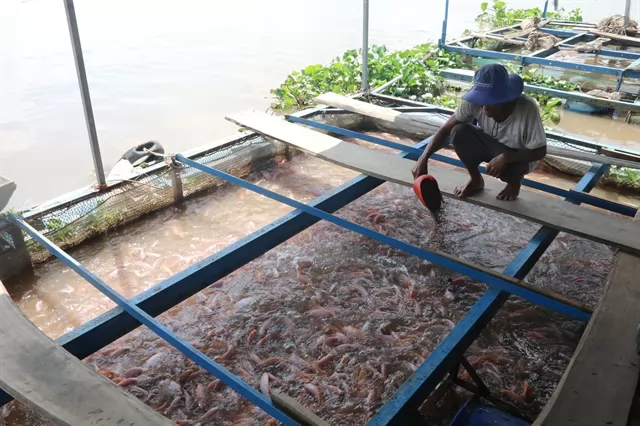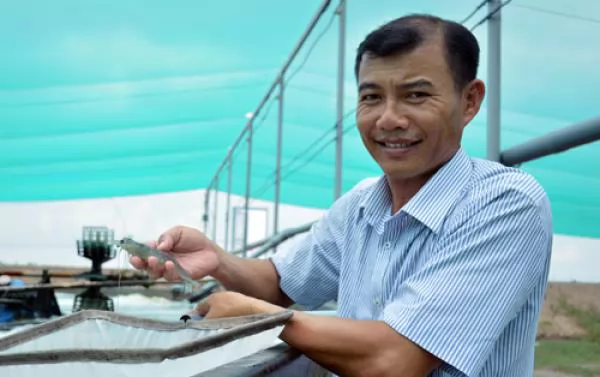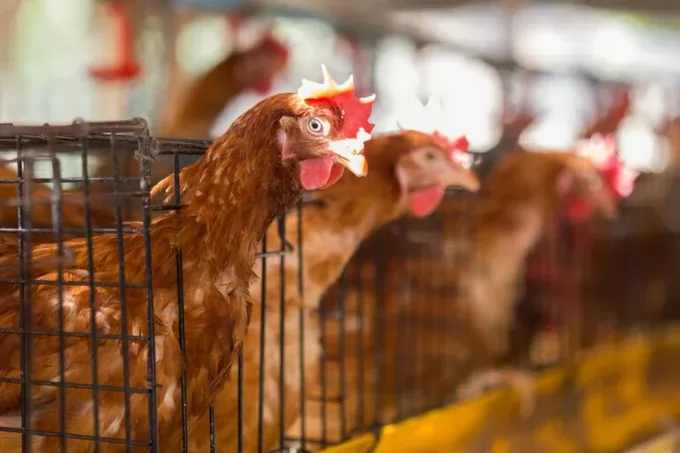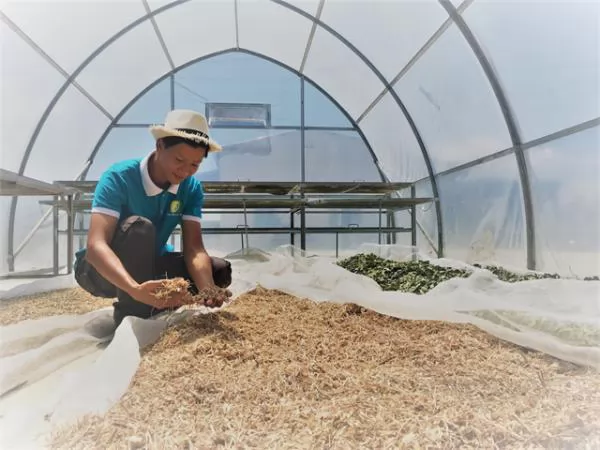Tiền Giang develops aquaculture

Red tilapia fish being bred in floating cages in Thới Sơn Commune in Tiền Giang Province's Mỹ Tho City. — VNA/VNS Photo Minh Trí
Tiền Giang Province is promoting aquaculture by teaching farmers breeding techniques and encouraging them to use advanced techniques using intensive methods.
TIỀN GIANG — Tiền Giang Province is promoting aquaculture by teaching farmers breeding techniques and encouraging them to use advanced techniques using intensive methods.
The Cửu Long (Mekong) Delta province has expanded breeding models adapted to climate change in economically disadvantaged areas on the Gò Công coast, Tháp Mười (Plain of Reeds) and flood-prone localities.
The localities have established concentrated aquaculture areas for shrimp-rice farming in Tân Phú Đông District, hi-tech shrimp breeding on the Gò Công coast and cage aquaculture in the Tiền River in Mỹ Tho City and other upstream districts.
The upstream districts have converted nearly 300ha of unproductive rice fields into aquaculture farms, mostly for producing aquatic seeds.
They supply juveniles to other provinces and cities in the South.
Freshwater aquaculture, including in cages in rivers, in the upstream districts offers higher profits to farmers than rice, and is adapted to climate change.
The province has 1,161 cages to breed various fish species in the Tiền River, a tributary of the Mekong.
Mostly in Mỹ Tho City and the districts of Châu Thành, Cái Bè and Cai Lậy, they are used to breed red tilapia and other high-value species such as basa, carp and white pomfret.
They produce around 10,500 tonnes of fish annually.
Thới Sơn island commune in the Tiền River in Mỹ Tho City has cage aquaculture and fruit orchards in combination with tourism services.
Nguyễn Văn Phong, secretary of the Thới Sơn Party Committee, said the commune has 585 cages.
Huỳnh Văn Nhàn breeds red tilapia in 11 cages here and earns VNĐ330 million (US$12,700) a year from them.
He has a steady income thanks to aquaculture, he said.
The price of red tilapia has increased sharply this year, and this has encouraged farmers to invest more in intensive breeding and improve output and quality to meet market requirements, according to the provincial Department of Agriculture and Rural Development.
Coastal districts like Tân Phú Đông and Gò Công Đông has expanded aquaculture to adapt to climate change and create jobs for locals.
Gò Công Đông has a 2,200ha concentrated clam breeding area where tourists are also hosted.
It also has 362ha of white-legged shrimp farms in coastal communes.
It harvested 12,200 tonnes of aquatic species farmed in brackish water and saltwater farms in the first half of the year.
The conversion of unproductive rice fields into aquaculture farms has helped many households escape poverty and lead stable lives.
Gò Công Đông was the province’s first district in which all communes were recognised as new-style under the country’s programme to develop new-style rural areas.
Tiền Giang has 13,100ha of aquaculture farms which yielded nearly 94,000 tonnes in the first half of the year, up 16.5 per cent year-on-year, according to the department.
It plans to increase the area to 14,700ha and harvest more than 364,000 tonnes this year, it added. VNS
Maybe you are interested

What makes 4.0 farmers different?
The year 2018 is the first time when Today Rural Newspaper of VNFU has cooperated with Ministry of Agriculture and Rural Development, Ministry of Science and Technology to organize the contest: "I am a 4.0 farmer"...

Dark clouds pile above the Slovak poultry industry
Hydina Slovensko, a prominent Slovak poultry processor, is on the verge of bankruptcy over a large debt of €23 million, local publication Hospodárske noviny reports.

Young men launch organic farm after studying in Israel
KHÁNH HÒA — Three years ago, the sugarcane growing area in Ninh Hòa Town, the south-central province of Khánh Hòa, was a barren land lot.





